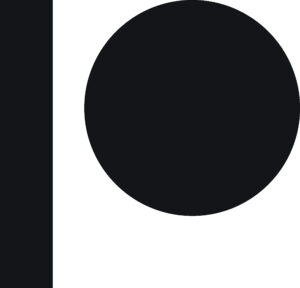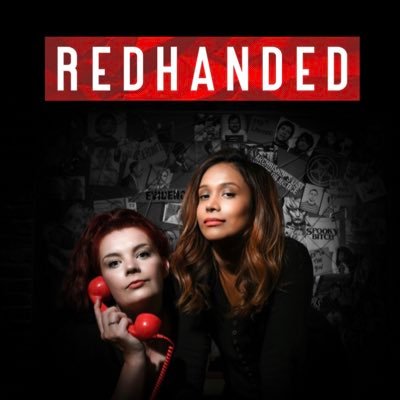Wondering how to start a Patreon page? Our in-depth guide takes you through the dos and don’ts, with expert insights from UK podcasters RedHanded.
Patreon is becoming an important platform for creatives looking to fund their work. Based in the US, the service launched in 2013 when YouTuber Jack Conte teamed-up with former college roommate and computer science graduate, Sam Yam.
Conte’s idea was to create a recurring payment system that would offer an alternative income stream for creatives who would be otherwise reliant on ad revenue. He contacted Yam, who coded it up and the rest is history – seven years on, the platform has overseen payments to creators exceeding $1 billion.
Here we’re going to take a look at how the platform works and what you can do to increase you chances of success on Patreon. To help us out, we’ve got Suruthi Bala from RedHanded podcast to offer some shrewd insights to the creator experience.
Alongside her podcast partner Hannah Maguire, Bala has taken their richly-reported true crime show from recording under a duvet (for sound-proofing purposes) to a point where it now generates an incredible $25,000+ a month from Patreon alone. Let’s get going…

What is Patreon?
Patreon is technically a crowdfunding site. The platform’s great innovation – over the likes of Kickstarter et al – is that it allows users to set up a regular payment or subscription (as opposed to a one-time pledge) to the project or creator. This means fans can offer their favourite creators continuous support, usually in return for exclusive ‘rewards’ of the creator’s choosing.
Patreon benefits
The key benefit for creators is that it can simplify the process of earning money directly from their own work. If people like what you do, they can support you financially, enabling you to create more (or pay your gas bill). The idea is that this can be built-up over time to form a regular income stream for the creator, although success is by no means guaranteed.
“The functionality of the platform is outstanding,” says Bala. “[It is amazing] how easy it is to use and explain to listeners, as well as how flexible it is to build a subscription strategy that is right for you and your patrons.”
The platform also benefits from a high degree of brand recognition compared to many of its rivals – and that can be particularly beneficial when you’re asking people to sign-up with their payment details.

Starting a Patreon – is it right for me?
There are a few factors to consider when starting a Patreon page and creating a useful level of income usually requires three things…
- An existing audience of a decent size and dedication (or the time to build one)
- The ability to create and understand the rewards that actually appeal to that audience
- The means to support yourself while you figure all this stuff out
However, the above can be said about almost all crowdfunding/ membership platforms. Suffice to say, you may not be quitting your day job straight away – as ever in creative circles, be very wary of any ‘opportunity’ that suggests otherwise – but that doesn’t mean it’s not worth starting.
“We’ve been using Patreon since December 2017,” says Bala. “It felt right for us, firstly because people seemed aware of it – our audience actually berated us into setting up a Patreon!”
At this point we would like everyone to note that when people ask to give you cash, you should help them to do so.
“Our audience actually berated us into setting up a Patreon!”
Suruthi Bala

“[Even then] we didn’t at first because we weren’t sure anyone would want to support us!” admits Bala. “But we were definitely wrong… It has been so transformative for us, the ability to monetise specific content and easily distribute it, as well as the way in which we’ve been able to build a community via Patreon, is fantastic.”
Of course, the transactional nature of Patreon’s reward tiers means you are essentially exchanging your creative output for cash. This is no bad thing in the eyes of Creative Money (obvs.), but some may feel they don’t want to price or paywall their work in this way.
Where do you draw the line? Read the blog post ‘The Starving Artist vs. The Sell-Out’ – the struggle of the creative worker for more thoughts on this.
Patreon membership – know and grow
“It wasn’t an overnight success,” says Bala of RedHanded’s debut on the platform. “But that was because we weren’t able to spend a decent amount of time creating for just patrons. The beauty of Patreon is to us: what you put in, is what you get out.”
As mentioned above, an existing audience is a big help, particularly, as you will likely only get a small percentage of the group who want to contribute something financially. However, the better the relationship you have with your audience, the higher the chance of success and the easier you will find it to create appealing rewards.
“I’d say that there are three types of patrons,” says Bala. “The transactional type – ‘what content have you got that I want – and can I afford it?’; The supporter – those who don’t care if you post on Patreon at all, they just want to help; and the in and outers – those who like a specific bit of content one month, pop in and leave.”
Want to make sure you never miss a post?
Sign up to the Creative Money newsletter!
Let me read it first >
What tiers and rewards should I set on Patreon?
A key piece of advice is to think about your fans and ensure that there are tiers suited to all budgets. After all, you don’t want to exclude anyone who wants to support you.
In terms of rewards, think about what (predominantly non-physical) things you can offer that will easily scale and do not require a huge amount of extra labour or man hours to deliver.
For instance, if you are a music producer, perhaps share some presets packs for your favoured software. If you make art, consider long-form videos of you working. If you produce written or recorded material, consider what evergreen content or access perks might appeal to patrons, or a reward that acknowledges your patrons in some way.
“Our most popular tier is actually our $10 tier and this was something we definitely planned”
Suruthi Bala





You might be surprised just how much your ideas about the best rewards differ from those of your fans, so it’s worth reviewing your tiers periodically in order to figure out what is working.
“Our tiers are: $2, $5, $10 and $20,” explains Bala. “As part of our strategy we really wanted to focus on building volume at the $5 and $10 tiers. Our most popular tier is actually our $10 tier and this was something we definitely planned.”
For RedHanded, the lower tiers get shout-outs, early releases and ad-free episodes, while the higher tiers get extra podcasts and (at the top end) an exclusive enamel pin.
“We did a ‘rewards audit’ in December 2019,” says Bala. “We noticed that there was a big jump in value between $2 and $5 and between $10 and $20, but not much between $5 and $10 – meaning people were obviously opting for $5. Why double your subscription for not much more? So we added high-value content to the $10 tier, working on the theory that people would upgrade – and they did!”


How to make money on Patreon
Bala says ‘the supporters’ piled-in quite quickly, but it wasn’t until October of last year that they started to make exclusive content, increasing their appeal to more transactional fans. This is when the money it generated started to really grow.
They did as much as they could before that point and it seems that rather than going all-out, it was creating rewards that were easy to fulfil initially – early releases and ad-free offers – which allowed the duo to stay the course and, eventually, to go full-time on the podcast.
“Last month we made $37,386 – and this is now our main revenue stream for the show”
Suruthi Bala





“The growth was slow and steady but as our listeners grew our Patreon income grew organically,” says Bala. “In March 2019 Hannah went full-time – in large part thanks to Patreon – and at this stage we started doing Patreon-only content. The boost this gave us enabled me to go full-time in August 2019 [and] because we then had the time, we rolled out a massive Patreon strategy with clear and regular benefits for each tier. It changed the game for us!
“From January 2020 to now [August 2020] our Patreon income has grown by 130%! Last month we made $37,386 – and this is now our main revenue stream for the show.”
Once the money starts to come in, you can withdraw cleared funds whenever you want or setup auto payments from your balance using direct deposit, PayPal or money transfer service, Payoneer.
How much does Patreon take?
Patreon offers three plans: Lite, Pro and Premium. None of them cost anything to setup and all of them make money by charging both patrons and creators. The three plans offer various levels of support and perks, though its worth noting that you’ll need the Pro account to set different reward tiers.
The Lite plan takes 5% of your monthly income, while the Pro and Premium packages take 8% and 12%, respectively. All the plans will charge your patrons payment processing fees and these can vary according to the currency you use. The standard dollar rate is 2.9% + $0.30.
What mistakes do people make on Patreon?
A common error you’ll see people make on their Patreon pages is not creating any real motivation for potential patrons to subscribe, or to raise their tier.
If you set up a page and say ‘Help me to keep doing this…’ without anything in return, you’re unlikely to have much success. Instead say, ‘Help me keep doing this and I’ll send you these resources, plus exclusive insights into my process and behind the scenes extras.’ Be specific about what this will be.
“Once someone has a bad experience on your Patreon they are hard to win back”
Suruthi Bala





As you go up through the tiers, make sure, as RedHanded did to great success, you give people a real reason to increase their monthly subscription. Think carefully about what you can easily fulfil, though – if you’re offering fans the chance to name your firstborn and a custom wood carving of their face for every $5 membership, you might be over-stretching yourself.
We ask Bala what mistakes she has spotted. “Not being able to dedicate enough time to it,” she says. “And over-promising and under-delivering. Once someone has a bad experience on your Patreon – i.e not receiving physical rewards, or not liking the content, or the content not going out as promised – they are hard to win back.”
What does work then?
This is often overlooked, but you need to do something that at least some people really like and feel a genuine affinity with. RedHanded’s balance of humour, insight and terrifying detail has helped them develop something of a fan army – dubbed the Spooky Bitches – and they are really loyal.
“We are incredibly lucky with the following we have developed,” says Bala. “I don’t think we have any big secret as to how we’ve done it, though. We just focus on great, well-researched content, talking about topics we are authentically interested and passionate about and we put it out like clockwork. And we bring our personalities into it, which definitely makes people feel more attached to you, your success and the show.”
If she had to boil it all down then, what would Bala say is the key takeaway for Patreon newbies?
“Get started, have a plan, think about the strategy (ie. what is value for money at each tier), think through what is realistic (like how often can you really upload, and if it’s physical rewards – figure out how expensive that is), then TELL your audience regularly about your Patreon… And then just do it!”
How can we help you?
What issues are you facing? What questions do you have about managing your money in the creative industries? What would be most helpful to you?
We don’t have all the answers, but maybe we can find someone that does.
